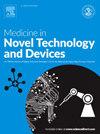基于注意力的多尺度局部二值卷积神经网络的宫颈细胞分类层次框架
Q3 Medicine
引用次数: 0
摘要
传统的宫颈细胞分类方法严重依赖于人工特征提取,由于细胞学图像的复杂性,限制了其通用性。尽管深度学习方法提供了巨大的潜力,但它们往往会牺牲特定领域的知识,特别是在自动特征提取过程中表征各种细胞亚型的形态模式。为了弥补这一差距,我们引入了一种新的分层框架,该框架将来自颜色、纹理和形态的鲁棒特征与改进的基于注意力的多尺度局部二元卷积神经网络(MS-LBCNN)发现的潜在表征相结合,旨在促进强大的特征提取机制。我们通过整合一种从粗到精的融合策略来优化分类过程,从而增强了标准的6级Bethesda系统(TBS)分类。所提出的方法是独特的装备,以管理存在于个体和集群细胞图像的复杂性。经过对三个独立数据队列的严格评估,我们的方法始终优于现有的最先进的技术。实验结果表明,我们的方法在促进自动化辅助诊断系统的发展,提高细胞学筛查程序的准确性和效率方面具有潜力。本文章由计算机程序翻译,如有差异,请以英文原文为准。
A hierarchical framework for cervical cell classification using attention-based multi-scale local binary convolutional neural networks
Traditional classification methods for cervical cells heavily rely on manual feature extraction, constraining their versatility due to the intricacies of cytology images. Although deep learning approaches offer remarkable potential, they often sacrifice domain-specific knowledge, particularly the morphological patterns characterizing various cell subtypes during automated feature extraction. To bridge this gap, we introduce a novel hierarchical framework that integrates robust features from color, texture, and morphology with latent representations discovered by an improved attention-based multi-scale local binary convolutional neural networks (MS-LBCNN), designed to facilitate powerful feature extraction mechanism. We enhance the standard 6-class Bethesda system (TBS) classification by incorporating a coarse-to-refine fusion strategy, which optimizes the classification process. The proposed method is uniquely equipped to manage the complexities present in both individual and clustered cell images. Upon rigorous evaluation across three independent data cohorts, our method consistently surpassed existing state-of-the-art techniques. The experimental results indicated the potential of our method in enhancing the development of automation-aided diagnostic systems, and bolstering both the accuracy and efficiency of cytology screening procedures.
求助全文
通过发布文献求助,成功后即可免费获取论文全文。
去求助
来源期刊

Medicine in Novel Technology and Devices
Medicine-Medicine (miscellaneous)
CiteScore
3.00
自引率
0.00%
发文量
74
审稿时长
64 days
 求助内容:
求助内容: 应助结果提醒方式:
应助结果提醒方式:


